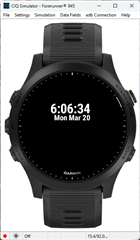Hi All,
Thanks for being so quick & helpful with all my questions getting started in the community. I've now got a few WFs in the CIQ Store, and I'm planning an update to all of them to include System 6 features. That means updating my "minApiLevel" for the first time and then re-deploying. I've never done this before, and I couldn't find any documentation / posts about the customer experience after I publish an update like this.
For users/customers that are on devices that aren't yet updated to System 6:
- Will new customers still see my WF listing, even if their device isn't updated to support it? If they try to install, what happens?
- What's the process like for existing customers who already have the WF installed?
Thanks!
-Mike


